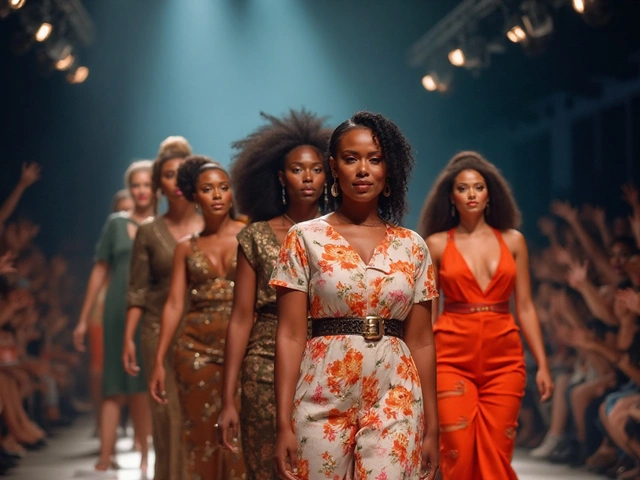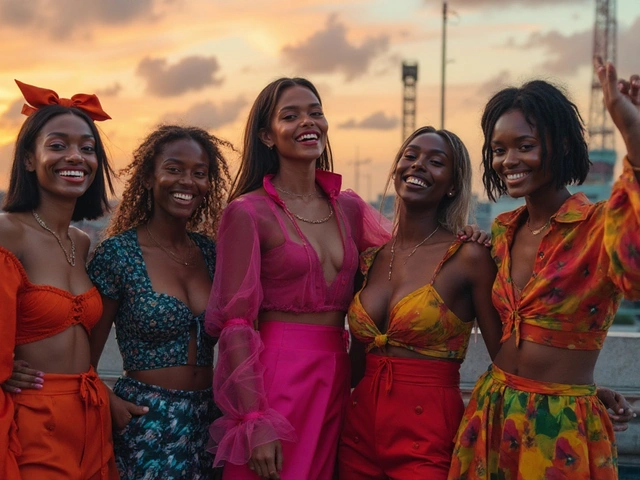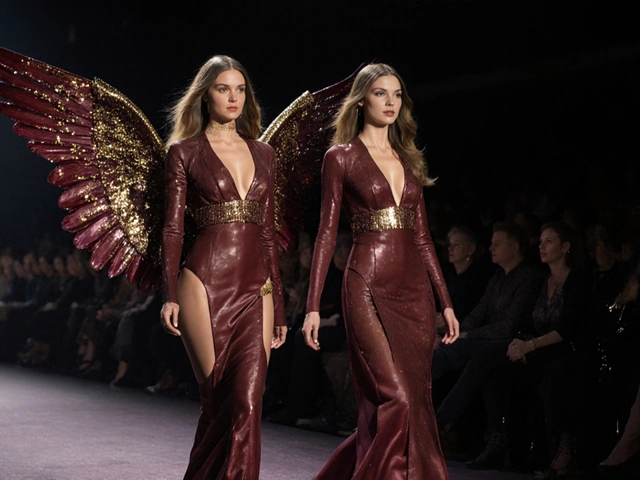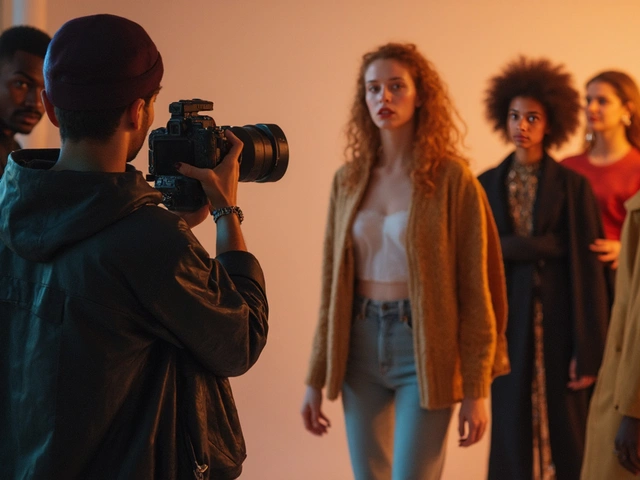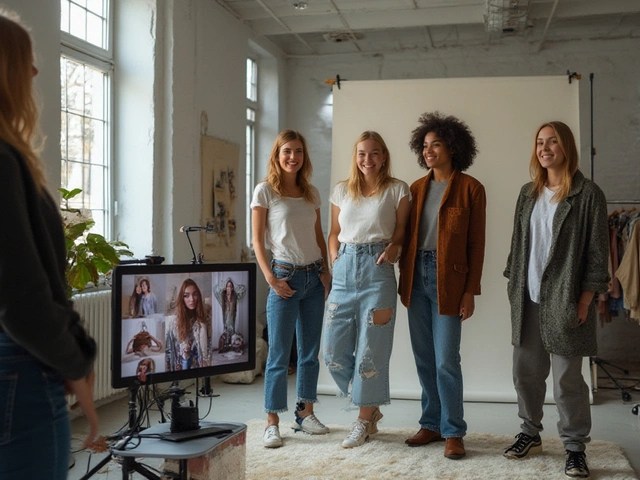Your model portfolio is more than a stack of pretty photos—it's your calling card in a super picky industry. If you cut corners or forget something basic, you could be selling yourself short before you even get in the door.
Forget overloading it with a million pictures; it’s all about picking the right shots and making every part of your portfolio work for you. Did you know agencies usually spend less than a minute looking at a portfolio? That means every page, every photo, every detail needs to count.
Got both headshots and full-body photos? Good. But there’s a lot more to cover. You'll need a mix of looks, some simple natural light photos, and enough info about yourself to let casting teams quickly decide: Can this person fit the job?
Whether you’re brand new or just updating your book, a tidy checklist helps you avoid rookie mistakes—like forgetting to tell your actual height, or using photoshopped shots that don’t look like the real you. Keep reading, and you’ll build a portfolio that gets noticed for all the right reasons.
- Essentials Every Model Portfolio Needs
- Choosing the Right Photos
- Info Beyond the Pictures
- Building a Digital vs. Print Portfolio
- Common Mistakes and Easy Fixes
Essentials Every Model Portfolio Needs
You don’t have to overthink it, but you do need to cover all the basics if your model portfolio is going to turn heads. Agencies and clients want just the facts—plus proof that you can look great in different settings. Stick to the golden rule: quality over quantity. Six to twelve killer photos is the sweet spot; more than that and you risk losing their attention.
Your portfolio should show the full picture—literally. This means you need:
- Clear headshots (with simple, clean lighting; avoid heavy makeup or retouching)
- Full-length body shots (just you, no busy backgrounds)
- Profile shots (left and right side, not just straight on)
- A couple of editorial or styled shots if you’ve got them (shows range)
- One or two simple, unretouched “digitals” (plain outfit, no editing; agencies call these "polaroids" too)
Now, beyond the photos, tack in a stats sheet. This is where you’ll list your:
- Height (in centimeters and feet/inches)
- Bust/chest, waist, and hip measurements
- Shoe size
- Eye and hair color
- Contact information
If you skip any of these, you risk hitting the no pile (seriously—23% of agencies toss incomplete portfolios, according to a 2023 ModelScouts report).
Here’s a handy table breaking down exactly what every top agency expects to see in your portfolio:
| Photo Type/Info | Why It's Needed | Tips |
|---|---|---|
| Headshot | Shows facial structure, skin, expression | Natural light, no heavy retouching |
| Full-body shot | Shows build and proportions | Plain clothes, relaxed pose |
| Profile (side) shot | Shows side features, jawline | Both left and right sides |
| Polaroids/Digitals | Shows real, unedited look | Plain background, simple outfit |
| Measurements & Stats | Casting suitability | Double-check for mistakes |
| Contact Info | Let them reach out easily | Email or agency contact only |
Remember, every part of your portfolio should answer a question someone at the agency or booking desk might have. Give them the answers up front, and you’re already miles ahead of most new models.
Choosing the Right Photos
If you’re aiming for a stand-out model portfolio, your photo choices can make or break your first impression. Agencies and clients aren’t looking for random selfies or highly edited shots; they want to see how you actually look and how you fit different roles. Most agencies will ask to see at least four main types of photos: headshots, profiles, full-body shots, and at least one shot with a genuine, natural expression.
Here’s what should always be in your photo lineup:
- Headshot: Clean face, minimal makeup. No over-the-top expressions. Keep it simple—your main goal is to show your natural look.
- Profile: Side view images. It shows your bone structure and helps clients see how you’ll look from every angle.
- Full-body shot: Tight, basic wardrobe. Jeans and a T-shirt work great. These shots show your proportions and posture.
- Smile and serious look: A mix shows your range. One with a genuine smile and another with a neutral or serious expression.
Agencies prefer photos with natural or soft lighting; harsh shadows and awkward studio lighting are out. Also, keep retouching to a minimum. Believe it or not, 67% of top agencies say they reject portfolios with photos that look overly edited or nothing like the real person.
If you want to be extra smart, add a variety of looks. Include:
- Casual outfit shot
- Business/formal wear
- Swimsuit or fitness shot (if you’re comfortable and it fits the gigs you’re after)
- Editorial (fashion-forward, magazine-style poses)
Check out this quick table of what top agencies typically want for photo numbers and types:
| Photo Type | Number Needed | Notes |
|---|---|---|
| Headshot | 1-2 | Both smiling and neutral |
| Profile | 1 | Clear side view |
| Full-Body | 2 | Front & back, plain outfit |
| Range/Editorial | 2-3 | Show versatility/styles |
One last thing: always update your portfolio with recent photos. Agents can spot a photo from five years ago faster than you’d think. Your look changes—your book needs to keep up.
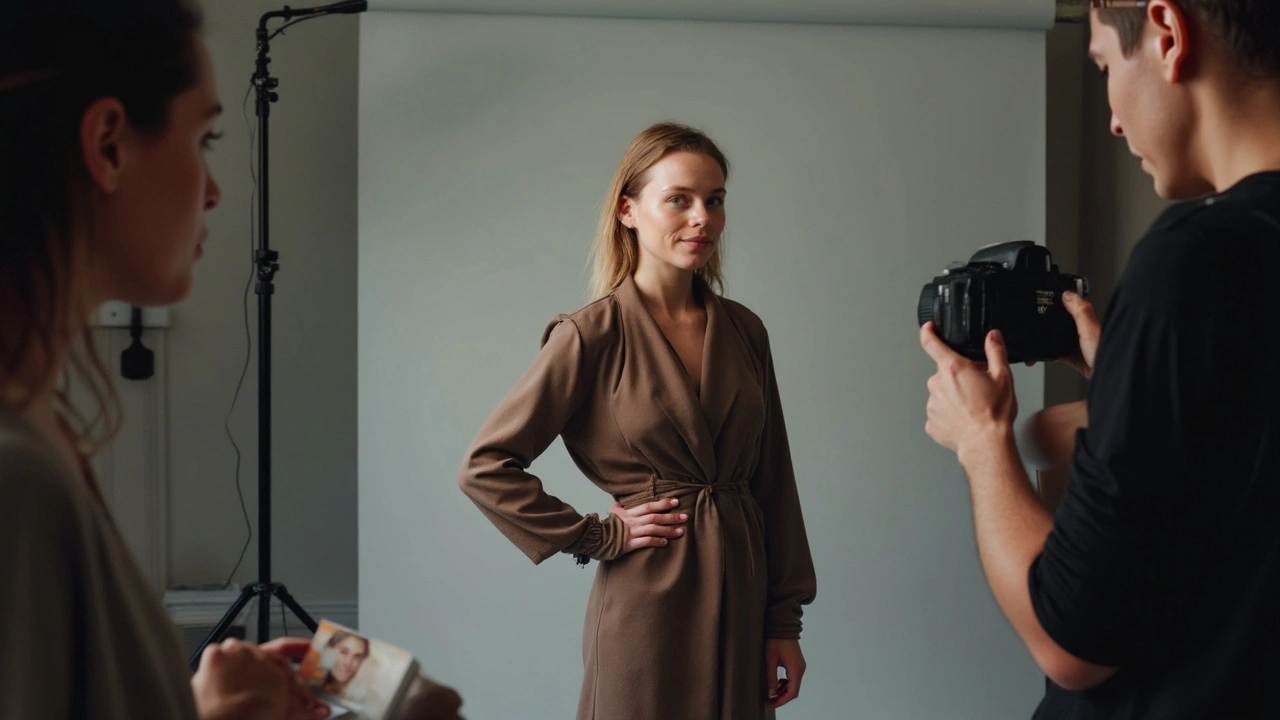
Info Beyond the Pictures
People might think a model portfolio is just a bunch of photos. It’s not. There’s a bunch of key info agencies and clients look for—skip these, and your killer looks won’t matter.
First off, always include your basic stats—so-called "model measurements." Agencies get picky about this stuff. Here’s the breakdown of what you need:
- Name (make sure it matches your documents)
- Age (only if under 21, but most agencies will ask anyway)
- Height (in centimeters and feet/inches; don’t guess or round up)
- Bust/Chest, Waist, Hips (in inches and centimeters)
- Shoe size (convert EU/US/UK if you can)
- Hair and eye color (natural—you might have wigs or contacts, but stick to real info here)
- Dress or suit size
- Location (city/country, for casting calls)
- Contact details—email and phone number; keep it professional and up to date
This table shows exactly what top agencies ask for in their online model applications:
| Measurement | Standard in Applications |
|---|---|
| Height | Both cm and ft/in |
| Bust/Chest | In and cm |
| Waist | In and cm |
| Hips | In and cm |
| Shoe size | EU/US/UK options |
| Dress/Suit size | Local + international equivalent |
Want to look like a pro? Put this info on the first page if it’s a print book, or close to the top in your digital model portfolio. It saves everyone time and looks organized.
Next up: bio details. Super short is best. A single, punchy paragraph that says what you do (like "fashion/runway/editorial"), what makes you different, and if you’re willing to travel.
Finally, don’t forget links if you have published work, press, or verified socials—Instagram is huge. But keep it clean; agencies have mentioned they drop people over sketchy online profiles.
Really, this stuff is about making it easy for the right people to find you, contact you, and book you fast. Don’t let missing or outdated info cost you a gig.
Building a Digital vs. Print Portfolio
Back in the day, every model needed a big, heavy print portfolio. Now, digital portfolios run the show. Most agencies and clients expect to see your work online first because it’s faster, easier, and you can update it whenever you want. Still, there are times when having a print portfolio gives you an edge, especially at in-person castings or big go-sees.
Here’s the main difference: digital portfolios get you in the door, print portfolios seal the deal. While scrolling is easy, there’s something about flipping through a nice, well-made print book that feels pro and memorable. Many top agencies in 2025 still like to see your photos on actual paper, especially when they meet you.
For your model portfolio, you’ll want both. The digital version should be clean, easy to navigate, and work well on phones—it’s honestly the first thing casting directors check. You don’t need a fancy website. Platforms like Adobe Portfolio, Wix, or even a clean Instagram grid can work. Just make sure you’re showing your best and most recent shots, with no duplicates or clutter.
- For digital portfolios: Aim for 12–20 images max. Use high resolution (no blurry uploads!), and keep your images organized: start with your strongest shot and mix up different looks.
- Add your stats and a short, friendly bio. Don’t use filters that change how you actually look.
- For print portfolios: Use high-quality prints (usually 8x10 inches). Arrange photos so casting agents see your range right away: keep it to about 10–15 pages, starting and ending with show-stoppers.
- Always bring your print portfolio to castings or agency interviews—even digital-savvy agents sometimes ask for it.
If you’re wondering about the pros and cons, check out this quick breakdown:
| Aspect | Digital Portfolio | Print Portfolio |
|---|---|---|
| Accessibility | Anytime, anywhere (email, link, QR code) | In-person only |
| Update Process | Immediate, easy | Requires reprinting |
| First Impression | Fast, often first point of contact | Memorable at castings |
| Cost | Usually free or low cost | $40–$100+ for quality prints/book |
| No. of Images | 12–20 | 10–15 |
If you skip the print side, you might miss out with old-school casting teams. But if you ignore digital, you barely exist in today’s modeling world. The sweet spot? Have both ready to go, so you can flex depending on what each job or agent wants. It’s not about twice the work—it’s about making sure you’re seen, online and in real life.
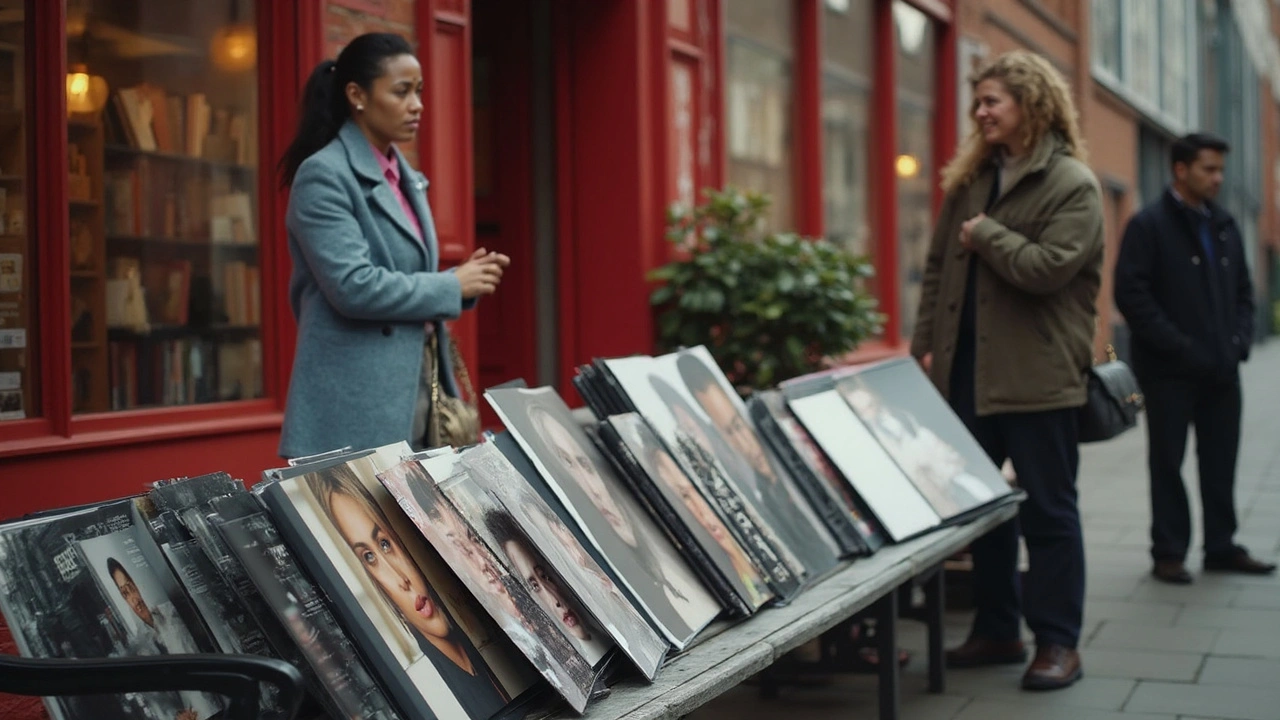
Common Mistakes and Easy Fixes
If you’re building a model portfolio, the little things you skip or overdo can instantly make or break your first impression. Here’s where a lot of new (and even experienced) models get tripped up—and how to quickly fix those problems.
- Using Too Many Filters or Photoshop
You might think a little retouching makes you look better, but agencies complain that overly edited images are the biggest turn-off. They want to see your real skin, features, and natural look. Always stick to clean, realistic editing. A spot removed here or there is fine, but don’t erase freckles or change your actual build. - Lack of Variety
A bunch of shots with the same outfit or background is boring. Agencies want to see you switch it up—one study from a major New York agency in 2023 found 82% of successful portfolios had a minimum of four clear looks (e.g., natural, sporty, high-fashion, commercial). So, change clothes, settings, and even hair styles to show your range. - Skipping Stats or Contact Info
Some people forget to list height, measurements, shoe size, or even contact info. That’s like applying for a job without a phone number. Double-check every stat; agents don’t chase you for missing details. - Poor Print Quality
If you bring a printed portfolio and the photos look fuzzy or dark, that’s a no-go. Always use high-res images and a clean, sturdy book. Cheap prints scream ‘unprepared.’ - Outdated Images
Maybe you dyed your hair, got a tattoo, or just changed your look. If your photos are from two years and five hairstyles ago, you’ve got to update them. Agencies expect shots from within the last year, tops.
| Mistake | Impact | Fix |
|---|---|---|
| Over-edited photos | Rejected for not looking authentic | Use light retouching; keep real features |
| All images same look | Seen as lacking versatility | Add 3+ different styles/looks |
| Missing measurements | Gets skipped by agents scanning quickly | Double-check all stats are included |
| Blurry or cheap prints | Makes you look unprofessional | Use high-res images and quality prints |
| Old portfolio photos | Agencies unsure of current look | Refresh photos at least yearly |
Quick tip: Before you show your portfolio, ask a model friend or trusted industry contact to review it. Fresh eyes catch simple mistakes. And if your agency likes digital, send a shareable link instead of a giant file—they’ll appreciate it.


